Submitted by Berrin Chatzi Chousein
Opinion:Architecture As A Subversive Act | Slums, Walled Cities, And The Torre David
Turkey Architecture News - Nov 26, 2013 - 21:43 12539 views
Architecture is often difficult to categorize: its intentions are up for debate, its effectiveness is only measurable after an indefinite tenure, and the dichotomy of form versus function dominates discourse. Since the Industrial Revolution, architecture has increasingly taken a primary role in policy decisions involving resources, environment, war, and technology. These policies cater to the status quo: how to keep the economy growing, how to house the middle and upper classes, and how to expand business and transportation efficiency.
This leaves out the downtrodden, disadvantaged, and poorest of the poor, the individuals that cannot afford the privilege of joining the larger conversation led by designers, financiers, contractors, and intellectuals, and are often ignored based on their circumstances. Take the housing crisis in China: due to real estate laws and development practices, housing remains unaffordable to the average and below-average citizens, despite the abundance of empty apartments and cities throughout the country.
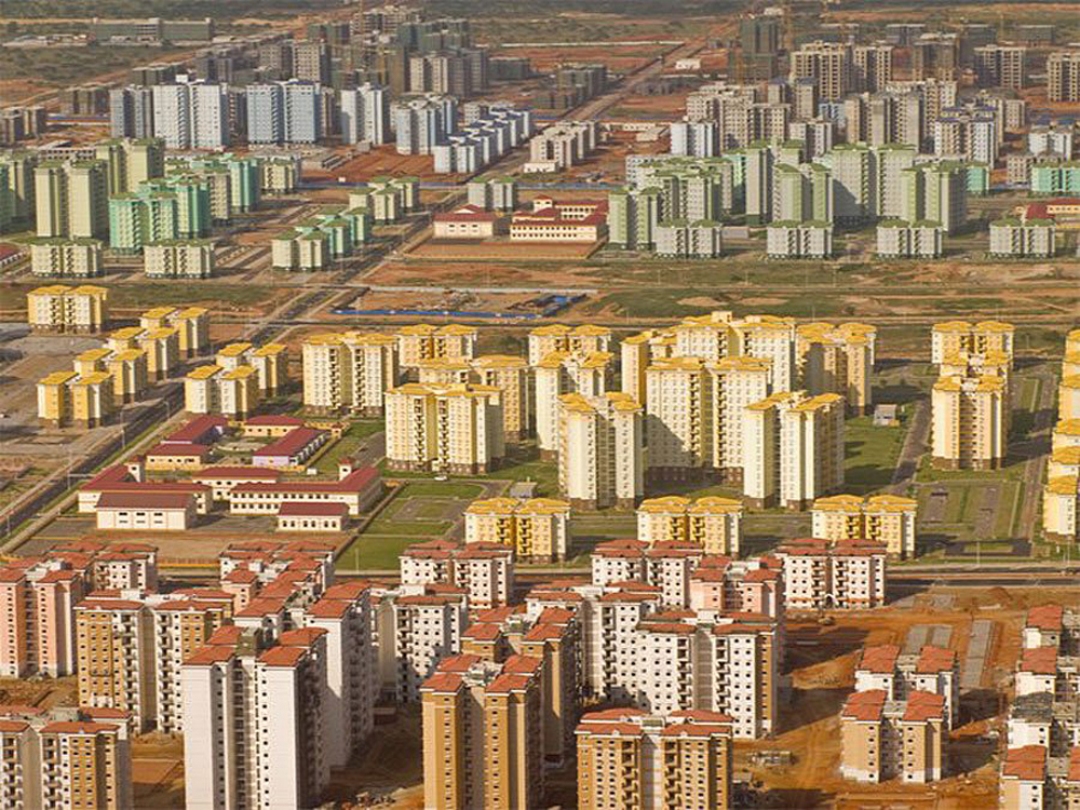
Chinese "ghost city."
China (and specifically Hong Kong) has a history of housing curiosities. The now-infamous Kowloon Walled City in Hong Kong functions as an experiment in how subversive acts of architecture, building, and living can develop organically. Beginning as a Chinese fort, it became an enclave for soldiers and their families refusing to cede to British rule in 1898. More Chinese citizens fled to the city following Japan's occupation of Hong Kong during WWII. By 1990, the de facto city contained around 50,000 residents crammed in giant towers on a 6.5-acre footprint, giving the "City of Anarchy" a population density of 4.9 million people per square mile. By comparison, Guttenberg, New Jersey is the most densely populated incorporated area in the U.S. with 58,821 people per square mile. Even Manila in the Philippines, the most densely populated city in the world at 111,002 people per square mile, doesn’t come close to the Walled City.
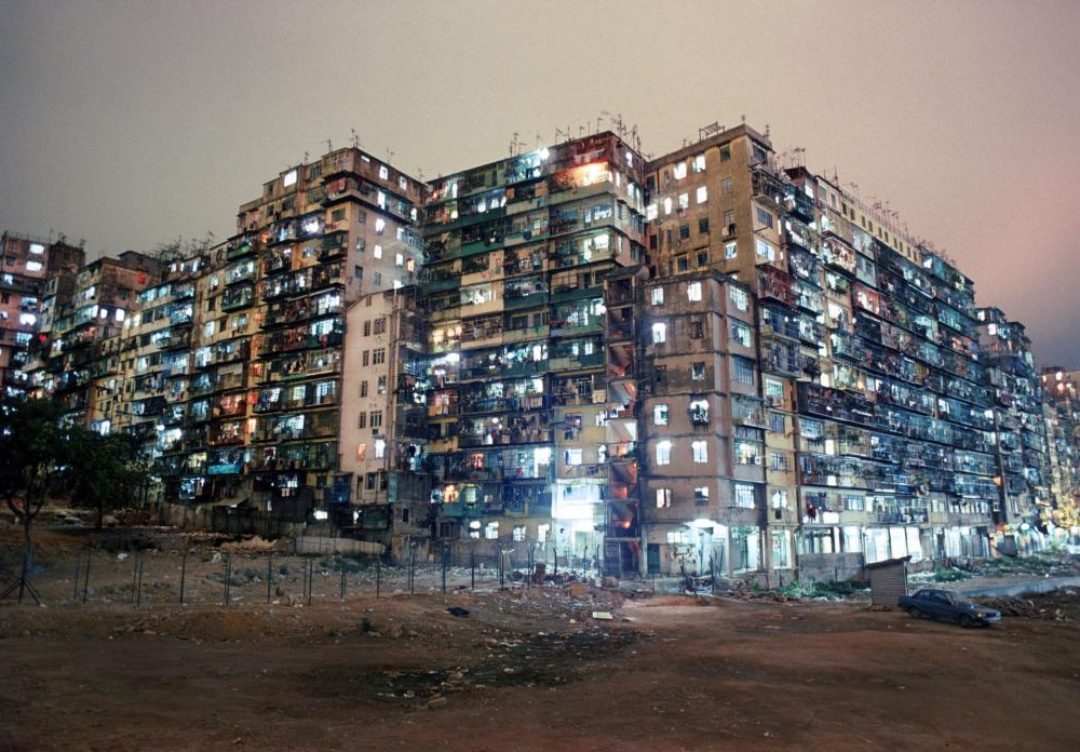
Kowloon at night.
These cities, however, contain massive infrastructure, housing and zoning regulations, and internal governments to enforce them. Kowloon, by contrast, was essentially a lawless area, with police and tax collectors afraid to enter its walls. Crime ran rampant, with gangs controlling the city, health and safety inspectors powerless, and the illicit drug, gambling, and prostitution trade thriving.
This man-made urban center was an aesthetic and regulatory embarrassment to the Chinese and British governments. After spending 2.7 billion Hong Kong dollars on compensation and relocation for the citizens (often considered inadequate), the Kowloon Walled City was demolished and turned into a parkin the mid-1990s. Virtually none of the original building material exists, and the history of the city is recorded only through photographs, an Austrian documentary, and testimonials from former residents. These inhabitants claimed to have lived in relative peace and happiness, despite receiving virtually no sunlight, braving claustrophobic spaces, and dodging constant dripping water from inadequate plumbing.
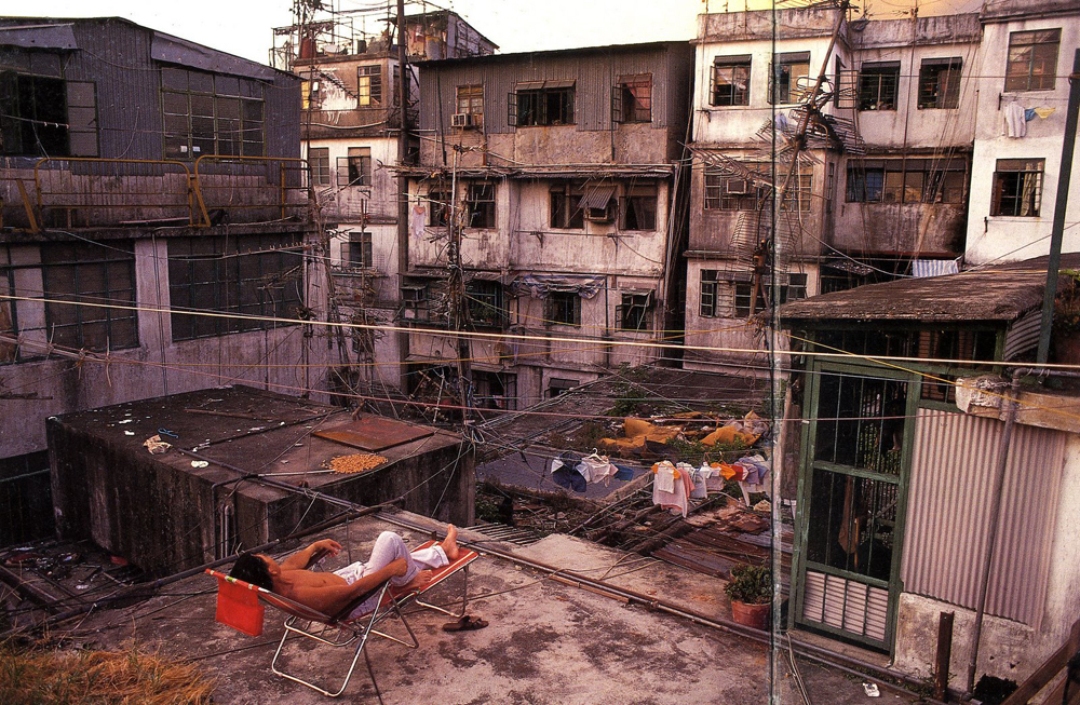
The roofs of Kowloon.
While the residents of Kowloon's Walled City built their structures without the help of architects or engineers, similar cities often cropped up in pre-existing structures. One examples is the Torre David in Caracas, Venezuela; originally known as the Centro Financiero Confinanzas, the structure was designed by Venezuelan architect Enrique Gómez. The construction trudged along until the death of its developer David Brillembourg in 1993, and following the economic collapse of Venezuela in 1994, construction was abandoned, leaving a shell of a building in the middle of the city. The structure remained unoccupied until 2007, when reformed convict and preacher Alexander Daza organized a move-in. Now, over 700 families occupy 28 of the 45 stories in the modern ruin, creating a relatively safe and enduring community.
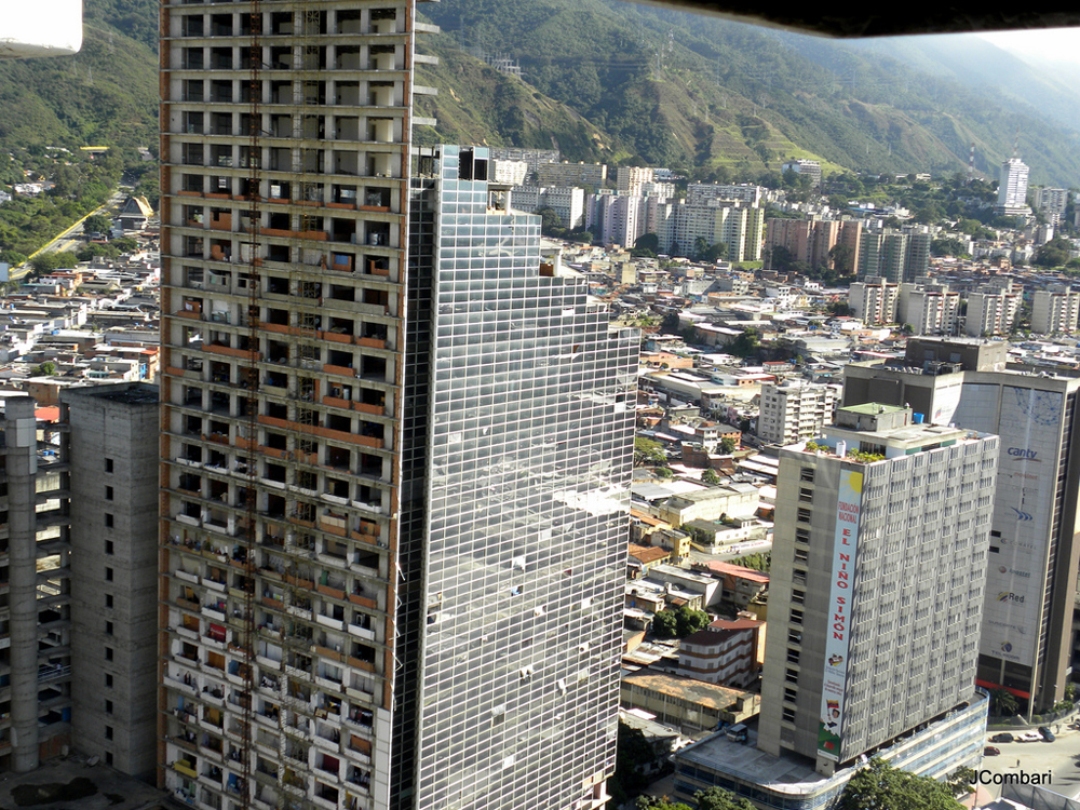
The exterior of the Torre David.
Torre David occupants have a system for collecting dues and have legal sources of electricity and water. Despite no guardrails on the balconies, empty elevator shafts, and unfinished staircases, the community thrives and children play freely.
Swiss architecture firm Urban-Think Tank, led by Hubert Klumper and Alfredo Brillembourg (a relative of the Torre’s deceased developer), has created a study that explores the possibilities of a growing vertical community in the skyscraper. “It doesn’t look good, but it has the seed of a very interesting dream of how to organize life,” says Brillembourg, who has created a webpage and video dedicated to the progress of the project.

The interior of the Torre David.
The project hopes to transition the Torre David into a thriving urban community. Though the legality of the occupation is debated, the Venezuelan government has yet to evict its occupants. However, the government also hasn’t worked to improve conditions in the slum, and critics blame this on the incompetency or apathy of the Chavez and Maduro regimes.
Regardless of the intentions of the Venezuelan government, the occupants of Torre David aren’t in any hurry to move and are comfortable in their self-policed community. Unlike the Walled City, Torre David is relatively new. It responds to current economic conditions, attitudes towards architecture and housing, and the emerging trend of citizen occupation. The community also functions as a critique of Western capitalism and excess.
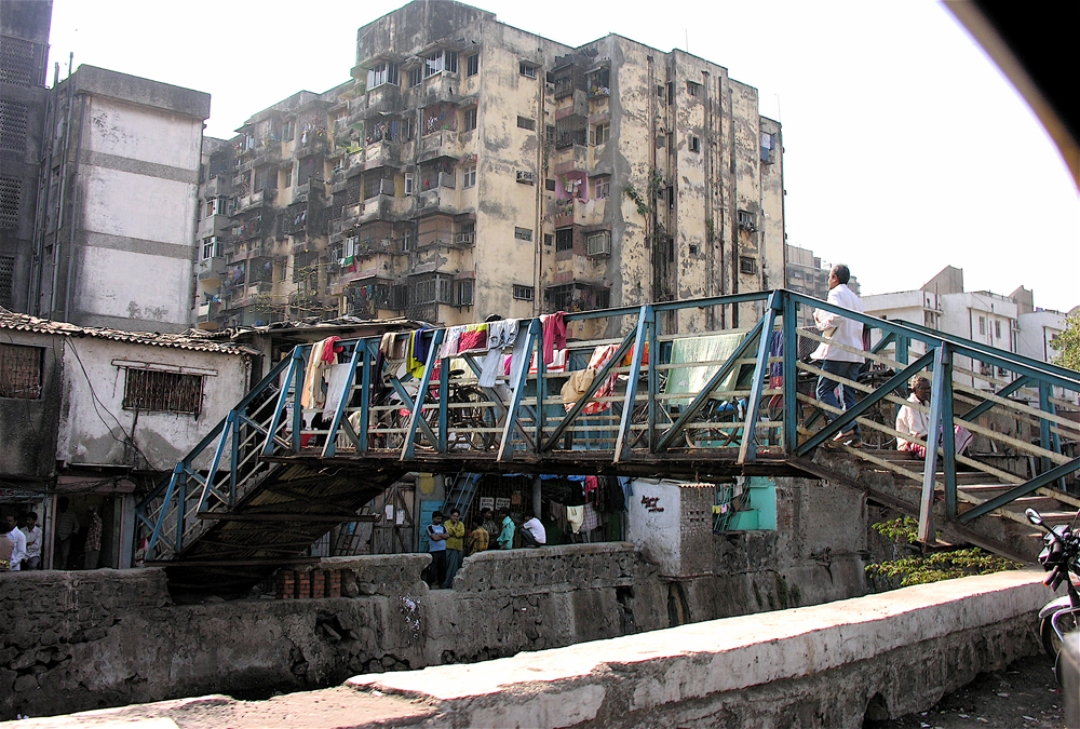
The entrance to the Dharavi slum city.
The Walled City and Torre David, like the Ponte Tower in Johannesburg and the Dharavi slum city in Mumbai, are acts of occupation that bridge a gap between official and unofficial political engagement. They challenge the status quo, turning dilapidated, forgotten sections of cities into self-serving communities. We, as a public with a voice, cannot forget our right to occupy space, be it for conversation, sport, protest, or long-term occupation. And if Soviet housing blocks have taught us anything, it's that authoritarian control of space often leads to negative consequences. It is up to us to choose how space should be used, shaped, and shared.
by Talha Ahmad
> via Architizer
